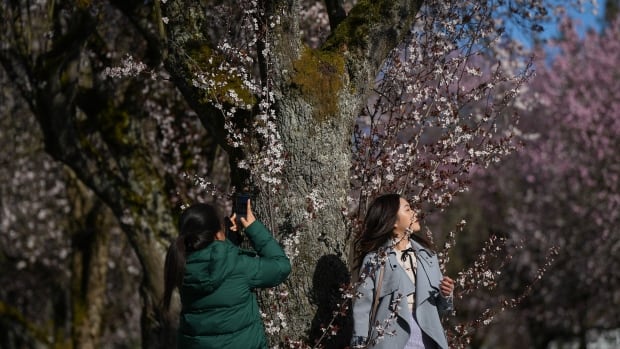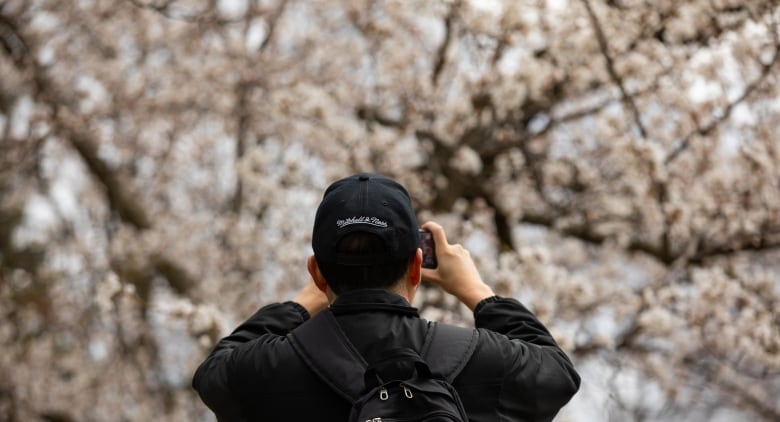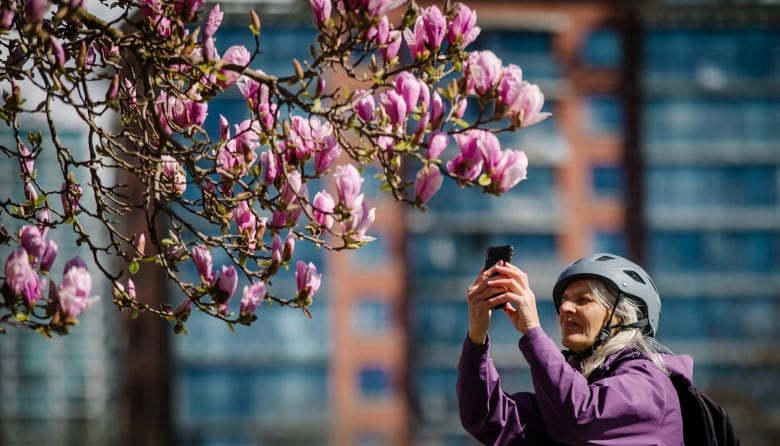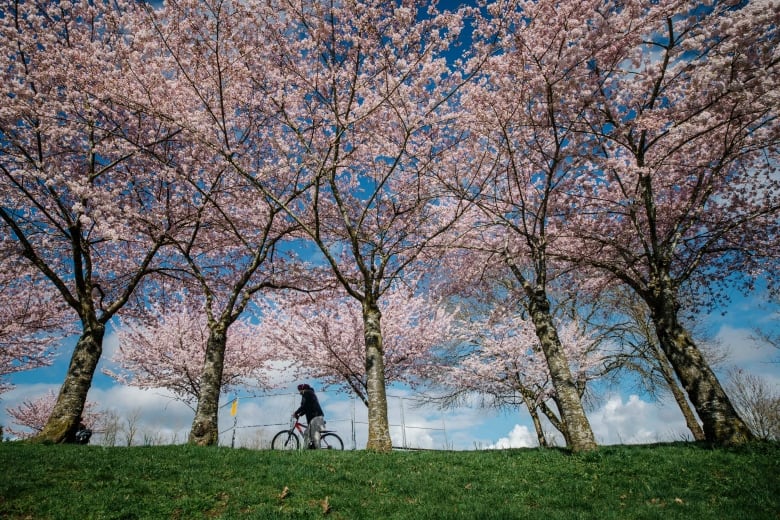
Cherry blossoms are an iconic first sign of spring.
Every year, thousands of Canadians flock to gardens and parks to take in the beautiful light pink and white petals of the tree.
Colin Ellard is a psychology professor at Ontario’s University of Waterloo and director of the Urban Realities Lab, which studies the impact of urban design on human psychology. He explained to CBC Kitchener-Waterloo’s Craig Norris, host of The Morning Edition, why people are obsessed with spring blooms.
The following interview has been edited for length and clarity. You can listen to the audio below.
Craig Norris: Why do we find cherry blossoms so alluring?
Colin Ellard: Well, I think it’s kind of a triple whammy. The first thing is that cherry blossoms are kind of the earliest harbinger of spring. So we’ve gone through, in fact especially this year, it’s been the darkest winter in what, 80 years. So we’ve gone through this long, protracted period of dismal greys and then suddenly there’s this pop of colour.
And so at an esthetic level, just the difference between that and everything else that we’ve been exposed to has a tremendous impact on us.
We know that the cherry blossom season is quite brief, even compared to other kinds of blossoming trees. It’s a short pop.

But more fundamentally, human beings are generally attracted to scenes of nature. It’s written into our DNA. In fact, this is something that goes way back to our prehistory. And the reasons have to do with — it’s kind of the obvious thing that where we see nature, we see bounty. So we’re predisposed to be drawn to, in fact to feel pleasure, when we see those kinds of scenes.
And if you think about blossoms, blossoms are kind of the ultimate, because not only do they signal nature, but they also signal impending fruit. You know, what follows the blossom is normally something that we can eat.
CN: So it’s evolutionary?
CE: Yeah, it really is.
CN: And it improves our moods overall, right? That’s why we always say being out in nature improves our mood.
CE: That’s right, it does. And in fact, there’s some really interesting neuroscience to suggest that we are so hardwired to be drawn to scenes of nature that it’s almost like something like runners’ high. That we have brain circuits that aren’t all that different to the circuits that attract us to other kinds of drivers, like food, that turn on when we see scenes of nature.
CN: Do you think especially — and you mentioned the darkest winter and there have been stories on it — do you think we should be more drawn to get out in nature this spring more than others?
CE: Oh goodness, yeah, I think so. I mean, there are all kinds of reasons for that. Not only has it been a really dark winter, but it’s been a dark few years, too. It’s so good for us to get out into natural settings to improve our mood and to decrease our stress levels as well.
CN: And it’s hard to do that in urban places, right? And some people argue that green space is a matter of social justice. Can you describe that a bit?
CE: I think that’s absolutely true. I mean there is substantial evidence now that there’s a direct connection between exposure to green space and a lot of health variables. So you could go so far as to argue that having the availability of nature close to your home is a matter of public health and a human right.
The sad fact of it is that there are equity issues here. There are spatial equity issues such that we know that not everybody has equal access to greenspace. And if you look at the design of a typical city, maybe especially a large city, you’ll notice the nicest landscape architecture, the best green spaces, are in proximity to the most expensive real estate.
So there’s an inequity right there, and when you think about the health connections that we know that we have with greenspaces, then you could argue that the people who could most benefit from these exposures are the ones who find it most difficult to get to.

CN: Do you think that, for the most part, cityscapes have enough greenspace?
CE: No, I don’t think so. I think we’re trying and I think over the last 10 to 20 years, there’s been increasing awareness of the fact that greenspaces are not just for esthetic purposes — that they’re fundamentally important to human health.
As that knowledge kind of percolates into policy, we’re seeing better and better greenspaces, but we’re definitely not there yet.
CN: How do you think people who don’t have this access to, they’re not near greenspaces, how do they get some of these benefits?
CE: It’s tough. I mean, I guess one of the most important things to understand is that even modest exposure is good exposure.
So if you live in an apartment with a balcony, and I know not everybody does, but if you do have balcony space, then that’s one affordance for you to be able to put some nature into your own setting.

If you don’t, remember that even a very modest exposure, like let’s say if you’re lucky enough to have a little parkette at the end of your street with a bench and a couple of trees, go there or incorporate that into your daily routine and you’ll experience health effects just from that modest exposure, even for 10 minutes.
CN: Do you have any favourite spots in the region that you like to avail yourself of?
CE: Yes, my absolute favourite [spot] locally is the Huron Natural Area [in Kitchener]. I think it’s fantastic.
It’s not that big and it’s surrounded by warehouses and industry. But when you’re in it, you feel separated from the rest of the city. You feel like you’re immersed in nature, and that’s one of the hallmarks of a good nature exposure — if you can feel that separation.
LISTEN | UW psychology prof explains why we love cherry blossoms:
The Morning Edition – K-W6:27Psychology prof explains why we love cherry blossoms and our connection to green spaces
Cherry Blossoms are often the first flowers of the season to bloom. Every year, hundreds and thousands of people flock to see them, touch and smell them too. Colin Ellard, a professor of psychology at the University of Waterloo, tells CBC KW’s The Morning Edition why so many of us are ‘blooming-obsessed’ with blossoms and our connection to green spaces.